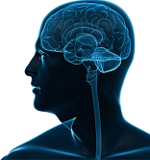Psychotherapy for PTSD offers a potential “biosignature” for effective treatment
Functional MRI studies suggest that psychotherapy for PTSD improves symptoms by changing the way brain networks communicate with each other, offering a potential “biosignature” for effective treatment
In prior blog posts we have reviewed literature demonstrating that TBI and PTSD may not be separable but may, in fact, be intimately related not just at the level of symptoms and etiology, but also as the level of pathophysiology. Both can impact the interactions between the body’s immune, endocrine and neuromodulatory neurotransmitter systems.
In a new study recently published in Biological Psychiatry, researchers used neuroimaging to examine how the brain areas responsible for generating emotional responses to threats are changed by psychotherapy. In the study, “Amygdala and Insula Connectivity Changes Following Psychotherapy for Posttraumatic Stress Disorder: A Randomized Clinical Trial”, they used functional magnetic resonance imaging (fMRI) scans to identify how brain networks communicate with one another before and after treatment. Specifically, they measured the degree of communication or “traffic,” known as functional connectivity, between areas of the brain responsible for emotion and reactions to emotional response and regions of the cortex in charge of logic and thinking. These include the amygdala (which can become hyperactive and even increase in volume after traumatic events), the insula, which controls autonomic functions through the sympathetic and parasympathetic systems, and the prefrontal cortex. These findings offer a new conceptual model for how psychotherapy reorganizes brain function and may help optimize future treatment interventions.
The research shows that improvement in symptoms were associated with particular changes in functional connectivity between brain networks, providing a potential “biosignature” for effective treatment.

